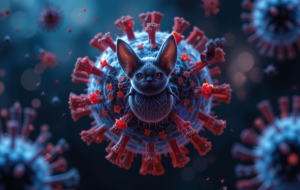A Bright Beacon in the Fight Against Disease: New Chemical Method Paves the Way for Targeted RNA Medicine

A Bright Beacon in the Fight Against Disease: New Chemical Method Paves the Way for Targeted RNA Medicine
Imagine a world where medicine is as precise as a laser, targeting diseased cells with pinpoint accuracy while leaving healthy cells unharmed. This vision, once relegated to the realm of science fiction, is inching closer to reality thanks to a groundbreaking new chemical method.
Developed by a team of researchers from Aarhus University in Denmark, this method simplifies the creation of oligonucleotide (ON) conjugates – short, custom-designed strands of DNA or RNA with immense therapeutic potential. These ONs can be programmed to silence specific genes or even edit them directly, offering a revolutionary approach to treating a wide range of diseases.
The Power of Precision:
Traditional drugs often work like sledgehammers, affecting both healthy and diseased cells alike. This can lead to a cascade of side effects, diminishing the quality of life for patients. ONs, on the other hand, are like tiny, targeted missiles, delivering their therapeutic payload directly to the enemy – the diseased cells.
The new chemical method makes this process even more efficient. It incorporates special “handles” and a unique linker into the ONs, allowing for easy attachment of a peptide marker. This marker acts as a homing device, guiding the ON to its designated target with remarkable accuracy.
A Glimpse into the Future:
This advancement holds immense promise for the future of medicine. It paves the way for:
- Personalized medicine: ONs can be tailored to an individual’s unique genetic makeup, offering truly customized treatment options.
- More effective therapies: By targeting specific genes involved in disease progression, ONs can potentially lead to more effective and lasting treatments.
- Reduced side effects: With their targeted approach, ONs have the potential to significantly reduce the harmful side effects often associated with traditional medications.
The Road Ahead:
While this new method represents a significant leap forward, there’s still work to be done before ON-based therapies become commonplace. Further research is needed to optimize the delivery and efficacy of these tiny powerhouses. However, the potential of this technology is undeniable, and its impact on the future of medicine is sure to be profound.
A Beacon of Hope:
This groundbreaking development is a testament to the tireless efforts of researchers around the world who are relentlessly pushing the boundaries of medical science. It offers a beacon of hope for millions of people living with chronic and debilitating diseases, and it serves as a powerful reminder of the incredible potential that lies within the realm of scientific discovery.






